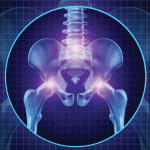Another technological trick is to provide patients with smart activity monitors, which are microprocessor devices worn on the waist. The devices are able to record information similar to that given by the instrumented walkway, but can also show how much time patients spend walking, running, or climbing stairs.
For health professionals who may not have access to such devices, there are more traditional ways to analyze gait. Physicians can ask patients to try walking in different positions—such as leaning a certain way or changing the position of their foot—to see how gait alters. Other ways to change gait include changing footwear, wearing braces, placing tape around the ankle, and using assistive devices, such as canes or walkers.
Physical therapists can help teach patients how to alter their gait by changing the timing of their steps, the size of each step, or the position of a foot when pushing off the toes, among other things, says Gross. In some cases, correcting a patient’s gait problems and pain can be as simple as changing footwear—for example, not wearing high heels as frequently.
Greg Lavine is a freelance journalist based in Maryland.

